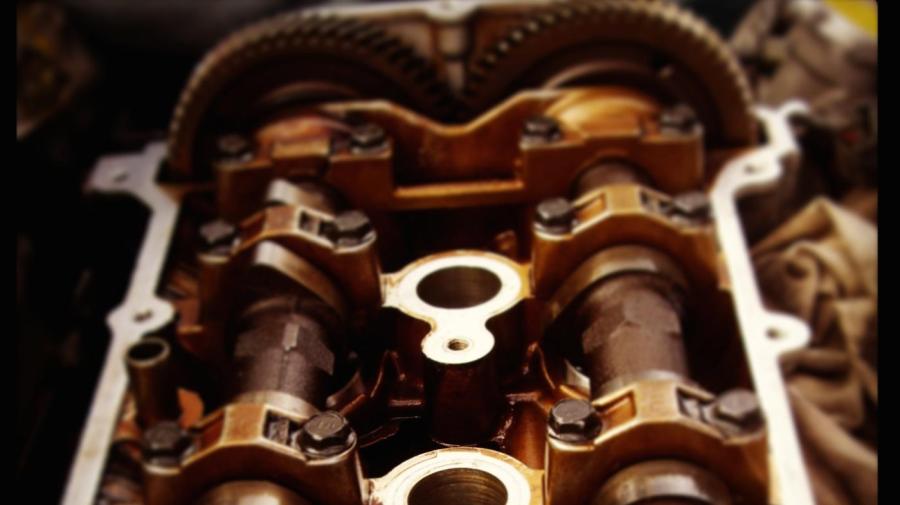What Is the Function of a Camshaft?

A camshaft in an internal combustion engine makes it possible for the engine’s valves to open and close. The camshaft is a cylinder that aligns with the engine’s cylinders. The asymmetrical lobes of the camshaft correspond to the engine’s valves. As the camshaft rotates, it opens and closes the engine’s valves.
The camshaft is connected to the engine’s crankshaft by the timing belt. The timing belt and the camshaft work together to open the valves in coordination with the stroking of the pistons. Timing belts must be checked and adjusted regularly. When a timing belt breaks, the camshaft stops spinning. When this occurs, pistons can strike a valve while it is closed, functionally destroying the engine.
Camshafts typically have variable speeds that shift as the speed of the engine changes. Most modern vehicles have dual overhead camshafts, with one camshaft assigned to the exhaust valves and a second to the intake valves. Typically, V-6 and V-8 engines have dual overhead camshafts, while smaller inline 4- or 6-cylinder engines have a single overhead camshaft. Dual camshafts make it possible to have more valves in the engine, which increases the flow of both intake and exhaust gases. This increased flow increases the engine’s power.





